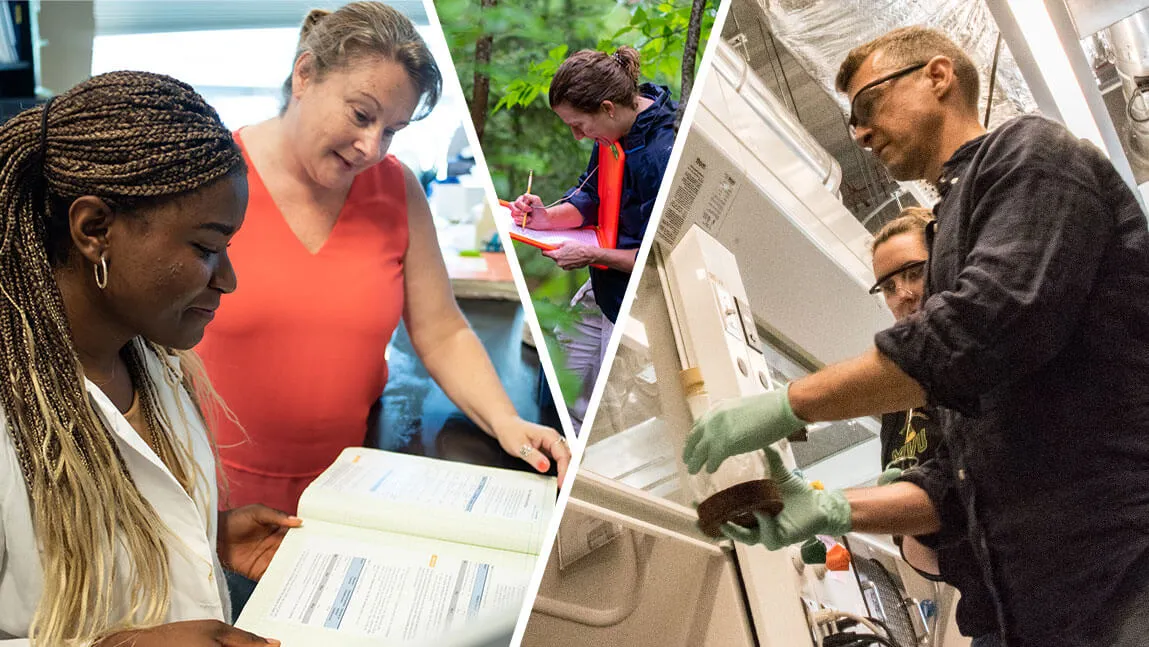University of Vermont faculty attracted $227 million in total extramural support for research in the last fiscal year—a new all-time high in the university’s history that will help ensure the health and well-being of our planet and further drive economic activity.
“UVM has made tremendous strides as a hub of advanced research over the past year,” said UVM President Suresh Garimella. “The growth in our research portfolio benefits Vermont in multiple ways and adds to the state’s intellectual and social capital, acting as a magnet for talent moving into Vermont and spurring the type of innovation that can attract entrepreneurs and other forms of financial investment.”
A clear example is the highly successful, and relatively new company, Benchmark Space Systems. The company—which specializes in propulsion systems for small satellites and is positioning itself as an industry leader of in-space mobility solutions—was founded by Ryan McDevitt, who earned master’s and doctoral degrees in mechanical engineering from UVM in 2011 and 2014 respectively. McDevitt studied and collaborated with the late UVM professor Darren Hitt, whose scientific interests later in his career focused on micropropulsion for nano-satellites. His work translated into technological innovations and earned several patents.
The company, located at the Hula technology campus on the Burlington waterfront, is advancing rapidly. Benchmark already has its thruster technology aboard satellites in space, following the successful SpaceX Falcon 9 Transporter-2 small satellite rideshare mission this summer. Benchmark has been expanding its staff, serving as a high-tech talent magnet for Vermont.
This upward trajectory in UVM’s research funding already appears to be attracting interest beyond traditional governmental sources. While reaching this new milestone comes from a welcome increase in federal funding, UVM also saw remarkable increases in support from foundations and industry—up 50% year over year—and from donors who committed almost $25 million in gifts supporting research, bringing external awards at UVM up 44% over the past two years.
Additionally, faculty members won 26 grants of $1 million or more ranging in purpose from studying global infectious diseases to sustainable farming in New England; from improving brain health to building resilience in the face of extreme environmental events; and from improving children’s health to better supporting military veterans. Support from the USDA’s Agricultural Research Service helped the College of Agriculture and Life Sciences establish the Food Systems Research Center that harnesses UVM’s distinctive strengths and emphasis on sustainability, health and environment.
This new level of research funding is the largest in UVM history by a wide margin, eclipsing the previous high of $181.7 million in sponsored research funding from governmental sources that UVM attracted during the 2020 fiscal year, which in turn surpassed the previous year’s amount by $37.4 million, or 26%.
“It’s gratifying to see the investments made in our faculty, support staff, and facilities paying dividends so quickly,” said Kirk Dombrowski, UVM’s Vice President for Research. “Our success in attracting this funding is a reflection on the quality of our faculty, staff and students and also a clear indication of the important role UVM plays in economic development for the region.”
The continued surge in funding supports the research goals laid out in UVM’s strategic vision, “Amplifying Our Impact.” Much of the new funding will enable UVM researchers to find solutions that improve the health of societies and the health of the environment, the research themes prioritized in the vision.
The Larner College of Medicine had the largest number of grants, but research awards were spread across many colleges and schools, including the College of Agriculture and Life Sciences, College of Arts and Sciences, Rubenstein School of Environment and Natural Resources, College of Engineering and Mathematical Sciences, College of Education and Social Services and College of Nursing and Health Sciences. The total number of awards rose significantly to 906, up from 680 the year before and 631 the year before that.
